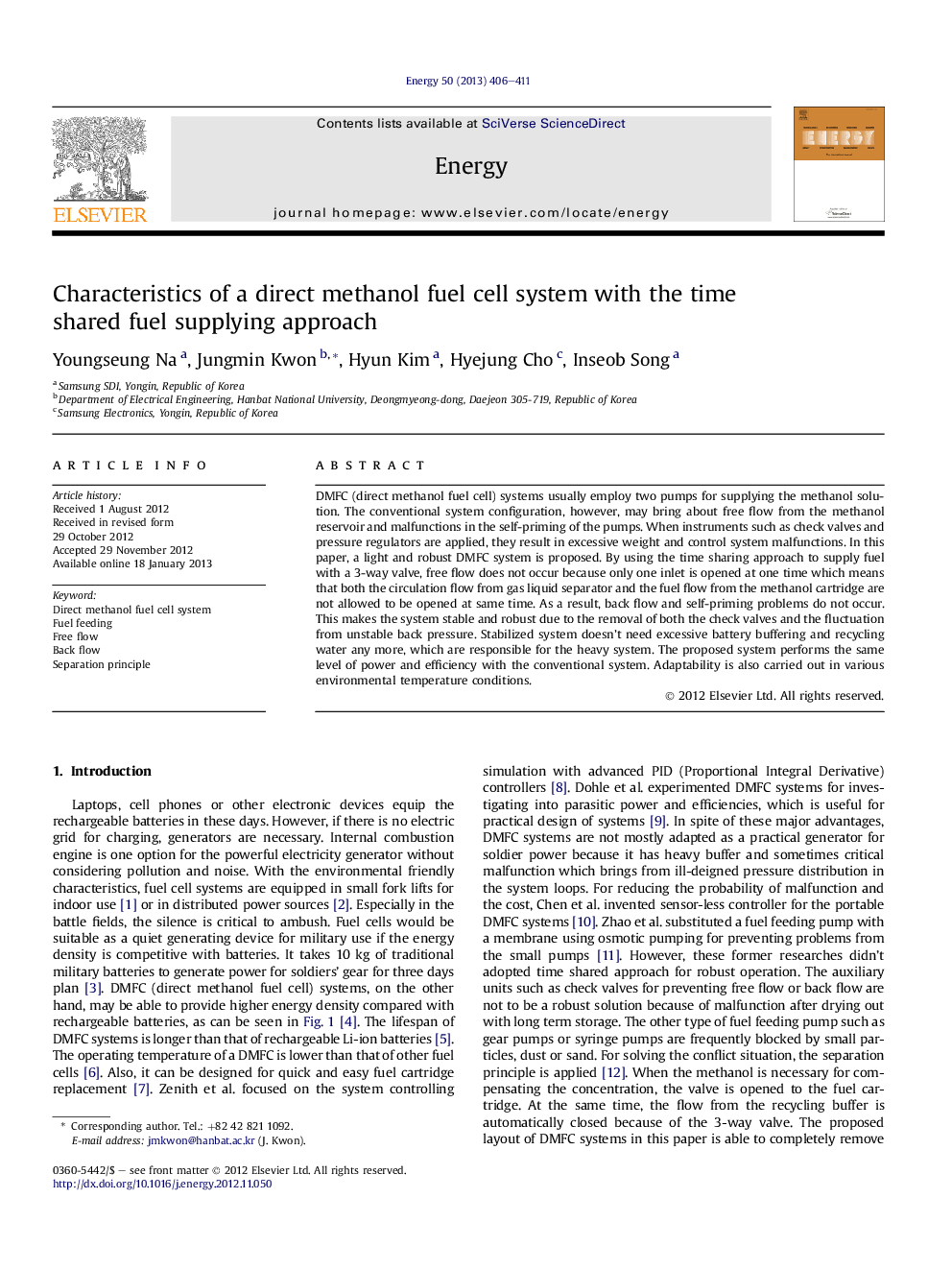| کد مقاله | کد نشریه | سال انتشار | مقاله انگلیسی | نسخه تمام متن |
|---|---|---|---|---|
| 1733251 | 1521496 | 2013 | 6 صفحه PDF | دانلود رایگان |

DMFC (direct methanol fuel cell) systems usually employ two pumps for supplying the methanol solution. The conventional system configuration, however, may bring about free flow from the methanol reservoir and malfunctions in the self-priming of the pumps. When instruments such as check valves and pressure regulators are applied, they result in excessive weight and control system malfunctions. In this paper, a light and robust DMFC system is proposed. By using the time sharing approach to supply fuel with a 3-way valve, free flow does not occur because only one inlet is opened at one time which means that both the circulation flow from gas liquid separator and the fuel flow from the methanol cartridge are not allowed to be opened at same time. As a result, back flow and self-priming problems do not occur. This makes the system stable and robust due to the removal of both the check valves and the fluctuation from unstable back pressure. Stabilized system doesn't need excessive battery buffering and recycling water any more, which are responsible for the heavy system. The proposed system performs the same level of power and efficiency with the conventional system. Adaptability is also carried out in various environmental temperature conditions.
► A light and robust DMFC system is proposed.
► The circulation pump is able to self-prime by itself after long term storage.
► The time sharing approach to supply fuel enables to control the methanol concentration precisely.
► The methanol concentration is controlled without free flow and the back flow from the fuel feeding pump.
► The excessive buffer of the batteries and the recycling water level are reduced.
Journal: Energy - Volume 50, 1 February 2013, Pages 406–411